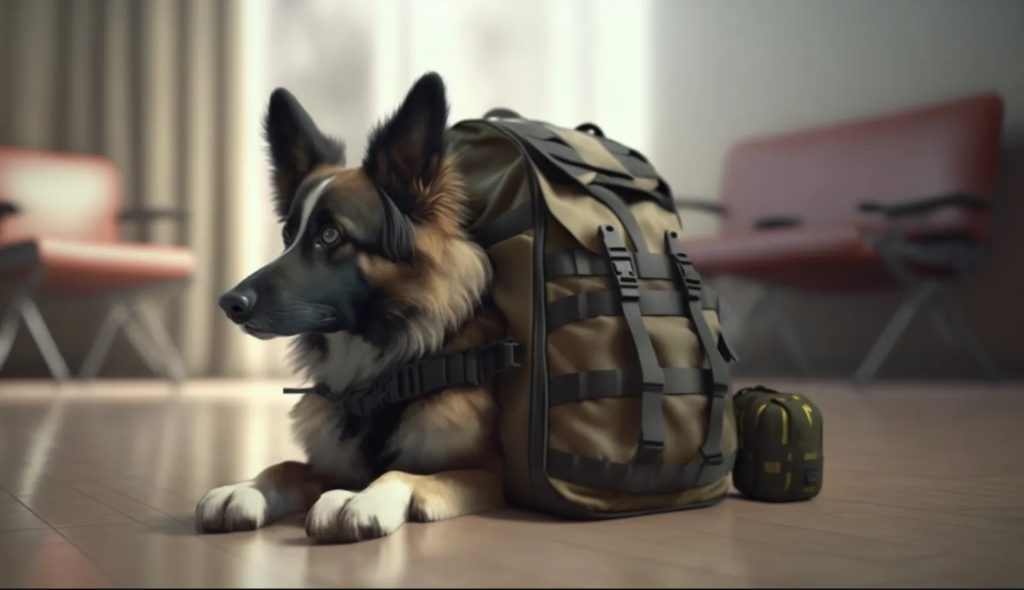When preparing for emergencies, it’s crucial to consider every member of your family, including your pets. In times of crisis, your furry companions will rely on you to help them stay safe and secure. One way to ensure you have all the essentials they need during an evacuation or disaster is by creating a pet bug out bag. In this article, we’ll discuss what should be included in your pet’s bug out bag and provide some tips for assembling a comprehensive emergency kit for your beloved animals.
Pet Bug Out Bag Basics

A pet bug out bag is similar to a human bug out bag. It contains all the necessary items your pet will need to survive for a minimum of 72 hours during an emergency. The contents of your pet’s bug out bag will depend on the type and size of your pet, as well as their specific needs. However, there are some general items that should be included in every pet bug out bag.
Food and Water
Ensure you have a three-day supply of your pet’s regular food in airtight, waterproof containers. Additionally, pack collapsible food and water bowls to make feeding and hydration easier on the go. Remember to include a three-day supply of water specifically for your pet. Avoid relying on your own water supply.
First Aid Kit
A pet-specific first aid kit is essential in case your pet becomes injured or ill during an emergency. Your pet’s first aid kit should include items such as:
- Gauze and adhesive tape for wounds
- Tweezers for removing splinters or ticks
- Antiseptic wipes or solution for cleaning wounds
- A digital thermometer specifically for pets
- Styptic powder or pencil to stop bleeding from minor cuts or torn nails
- An emergency blanket to keep your pet warm
Identification and Documentation
Your pet should always wear a collar with an ID tag that includes your contact information. However, during an emergency, it’s also a good idea to have a backup form of identification in their bug out bag. Consider including a recent photo of your pet, a copy of their vaccination records, and any other pertinent medical information. Additionally, if your pet is microchipped, include the chip number and registry information. These documents should be stored in a waterproof container or bag.
Leashes, Harnesses, and Carriers
For dogs, pack a sturdy leash and a comfortable harness. Cats and other small pets will need a secure carrier for transportation. These items will help you maintain control of your pet and keep them safe during an evacuation.
Comfort Items
Emergencies can be stressful for pets. Pack a few of their favorite toys or a comforting item, like a familiar blanket, to help them feel more secure during a crisis. These items can provide a sense of normalcy and help reduce anxiety.
Waste Disposal Supplies
Don’t forget to include waste disposal supplies, such as poop bags for dogs or a portable litter box and litter for cats. This will help maintain sanitation and prevent the spread of disease during an emergency.
Other Essential Items
Depending on your pet’s specific needs, you may need to include additional items in their bug out bag. Some examples include:
- Medications and prescriptions for any ongoing medical conditions
- An extra collar or harness
- A pet-specific insect repellent and sunscreen
- A muzzle, if necessary for your pet’s safety
- A pet life jacket, if you live in a flood-prone area
Assembling Your Pet’s Bug Out Bag
Once you’ve gathered all the necessary items for your pet’s bug out bag, it’s time to assemble it. Choose a durable, waterproof bag or backpack that’s easy to carry and can accommodate all the supplies. Organize the items in a way that makes them easily accessible when needed. It’s also a good idea to familiarize yourself with the contents of the bag and know how to use each item.
Keep your pet’s bug out bag in an easily accessible location, preferably near your own bug out bag. This will ensure you can quickly grab both bags during an emergency.
Regularly Update Your Pet’s Bug Out Bag
It’s essential to regularly update and maintain your pet’s bug out bag. Check the expiration dates on food, water, and medications, and replace any expired items. As your pet grows and their needs change, adjust the contents of the bag accordingly. Make it a habit to review and update the bug out bag every six months or as needed.
Final Thoughts
Your pet is a valued member of your family, and their safety should be a top priority during an emergency. By assembling a comprehensive pet bug out bag, you can ensure they have everything they need to stay safe and comfortable during a crisis. Additionally, it provides you with peace of mind knowing that you’re prepared to care for your beloved pet, no matter what challenges arise.
Ready to take the next step in emergency preparedness? Check out our Essential Go Bag List for a comprehensive guide to building a go bag for yourself and your family.
